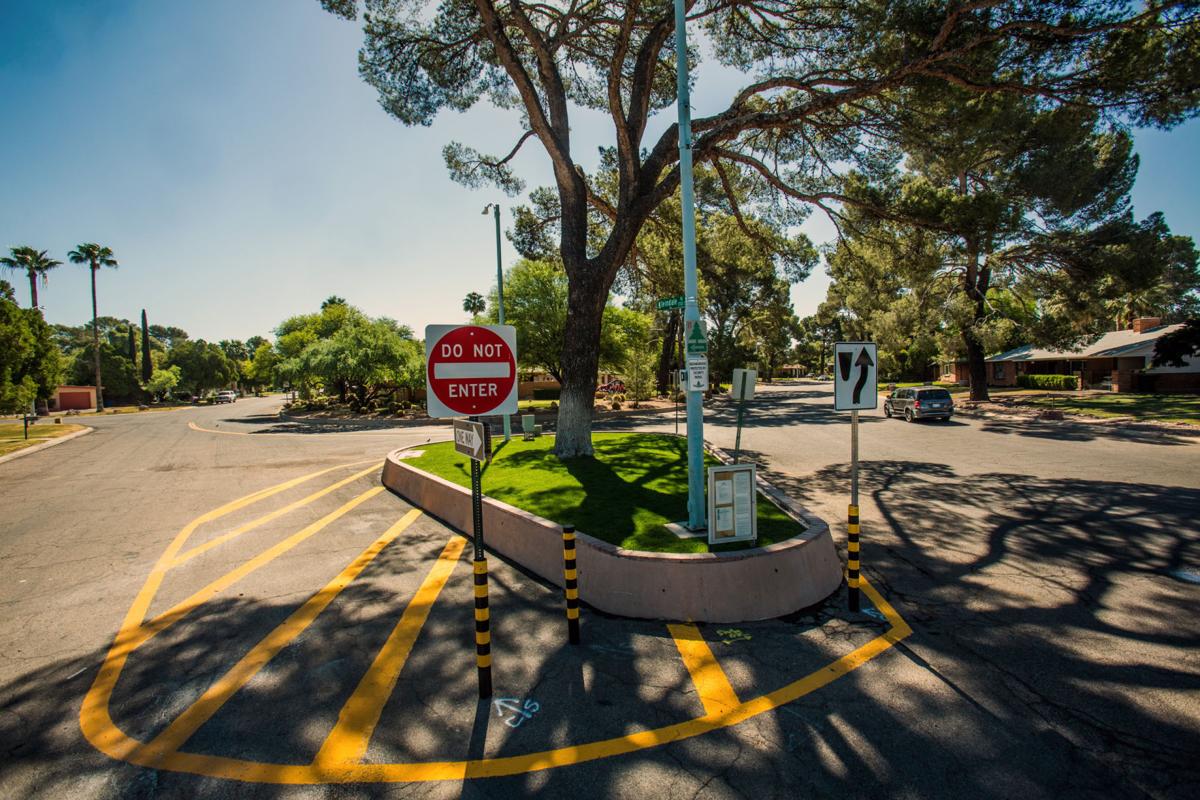The Road Runner did not expect to revisit the Winterhaven bollard issue again.
In early November, the whole neighborhood held an election to decide how to address changes at the North Christmas Avenue-East Kleindale Road intersection. Out of 179 votes cast, 93 residents voted to remove the black-and-yellow bollards that went up in October 2015, blocking east-west traffic on Kleindale north of the intersection’s charming island.
Many residents objected to the installation, which came after a petition signed by a number of nearby homeowners asked city officials to greenlight the project. That petition was followed by another, signed by some signatories of the first, that asked for the bollards to be removed.
Here’s what this column had to say about the vote last year, which was intended to let everyone weigh in and put the matter to rest once and for all: “The Road Runner can now happily report that a good old-fashioned neighborhood election, which roughly coincided with the far more divisive presidential election, has calmed tensions and given the neighborhood a path back to harmony.”
It has not played out quite like that.
Rather, the city of Tucson recently installed a pared-down version of a roundabout design it had previously presented to residents, which was the second — and least popular by a wide margin — of three options on the November ballot.
Now, Kleindale north of the island is a westbound one-way, and eastbound vehicles are directed to jog south and then back north on Christmas to rejoin Kleindale. The bollards — to the relief of a majority of voters — were removed, though at Winterhaven’s expense.
“Our traffic engineer devised a plan that the city of Tucson felt ... would be something that would be palatable for the residents in the area, and also keep safety for all drivers within the area and prevent conflict,” said Jesse Soto, who heads the city’s Neighborhood Traffic Mitigation Program, to which the two contradictory bollard petitions were submitted in 2015.
It may prove effective at preventing vehicular conflicts, but it has also rubbed some residents the wrong way, given that the clear preference expressed in the vote did not materialize. Others are doubtful that a safety problem in need of a solution existed in the first place, and even Tucson transportation Director Daryl Cole noted a “lack of documented crash experience” at the intersection in a June 2016 letter.
“The intersection I could live with, but i just don’t like the way it got there,” said Thomas Collins, who lives across the street from the island, about the second petition and neighborhood election not being acted on.
“I think a lot of people were grossly unhappy that it wasn’t what we voted for,” said Jill Hawkins, a bollard critic who serves on Winterhaven’s traffic committee.
“It felt very cynical at the end,” she added.
Councilwoman Karin Uhlich, whose ward includes Winterhaven, told the Road Runner that “it was certainly implied by that step that neighbors had a meaningful voice. If that’s not the case, then we should state that and not waste people’s time.”
But Soto made the point that, at the end of the day, any neighborhood proposal still needs to be approved by the city.
“Yeah, the neighborhood did have an election to discuss what they preferred, but again, these are city streets, this is city of Tucson right-of-way,” he said. “Like I told them, when I had meetings with their leadership and board members, the ultimate call would be on the city of Tucson, just because of public safety.”
He could not recall another instance of reversing a neighborhood traffic mitigation project, and previously told the Road Runner that essentially every other one has been completed uneventfully.
Mary Bouley, the new Winterhaven board president, disagreed that the new design completely ignores the neighborhood’s will, saying that it “falls between two of the options.”
But how faithful it is to the vote isn’t even the main issue: Figuring out a way to bring the neighborhood back together and move past the divisive saga is, according to Bouley.
With the new intersection in place — and many resigned to it, or even supportive of it — Bouley hopes to develop a decision-making process that preserves the iconic neighborhood’s esprit de corps, and avoids a repeat of the divisiveness.
DOWN THE ROAD
- Starting Monday and lasting through Thursday, West Speedway’s eastbound right lane will be closed just east of Interstate 10. Crews will be working from 9 a.m. through 4 p.m. to repair a storm drain grate, and delays are anticipated.
- Work on the West Curtis Road improvement project also starts Monday, and will last for about three months.
Between Highway Drive and North Plane Avenue, crews will install four speed tables and a mini-roundabout at the North Shannon Road-Curtis intersection. Lighting, pedestrian-safety features and wheelchair-accessible ramps at the roundabout are part of the project.
- As part of Phase 2 of the Grant Road Improvement project, crews will remove traffic signals Wednesday morning and replace them with temporary signals at the East Grant-North Sixth Avenue intersection. The work should be done by 4 p.m., and police officers will be on site to direct traffic throughout.





